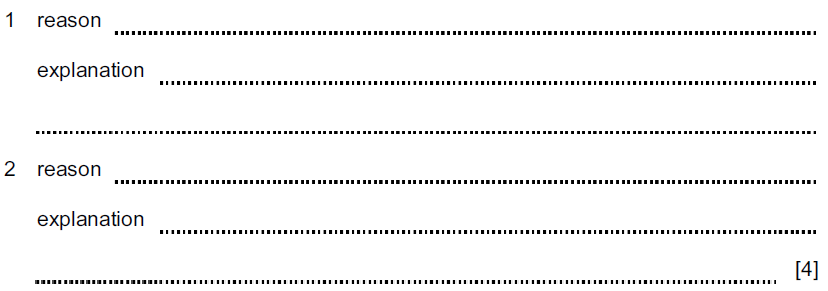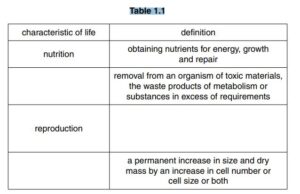Question
A new species of frog was discovered in 2009 in the Amazon rainforest in Peru.
Fig. 6.1 shows this frog, Osteocephalus castaneicola.

(a) State the genus of this animal. [1]
In the past, anatomy was a way to classify species. DNA is now used to aid the classification of
organisms.
(b) (i) Draw and annotate a diagram to show the structure of DNA.
(ii) Describe how DNA can be used to classify organisms. [2]
(c) DNA controls cell function by controlling the production of proteins.
(i) Proteins are coded for by a length of DNA.
What is the name given to the length of DNA which codes for a protein? [1]
(ii) Describe the role of mRNA in protein synthesis. [3]
[Total: 10]
Answer/Explanation
Ans
6 (a) Osteocephalus ;
(b) (i) 1 two strands twisted to form helix ;
2 cross-links between the strands ;
3 A joins with T/C joins with G ;
4 all labels correct ;
(ii) the sequence of bases in DNA are used ;
base sequences /DNA/ genes, that are more similar mean that organisms are
more closely related ; ORA
(c) (i) gene ;
(ii) 1 mRNA carries a copy of the gene/DNA/ base pair sequence ;
2 mRNA travel from the nucleus ;
3 to the ribosome/ cytoplasm ;
4 order of amino acids depends on the sequence of bases in mRNA/AW ;
Question
Vertebrate animals are grouped into a number of classes.
Complete the sentences by naming each of the vertebrate classes that are described.

Answer/Explanation
Ans:

Question
Fig. 1.1 shows a woodlouse.

The woodlouse is a crustacean, one of the four groups of arthropod.
It is a herbivore that lives on land and eats decaying plant materials.
It breathes with gills that must be kept moist.
(a) Name two other groups of arthropod.
For each group state one feature found only in animals of that group.

(b) Some students were sent to find woodlice for an investigation.
Suggest and explain two reasons why populations of woodlice are usually found under
stones, decaying wood and leaves.

Answer/Explanation
Ans:

Question
Fig. 1.1 shows a snake.
A snake is a living organism and so shows the characteristics of life.
The snake feeds by catching small animals such as mice and rats

Fig. 1.1
(a) Complete Table 1.1 showing some of the characteristics of life for the snake.

Answer/Explanation
Ans:

(b) The snake is a reptile.
State one way that a reptile differs from a fish.Ans: (reptiles)
do not have gills or fins / have legs / have lungs / can live on
land / lay shelled eggs / cannot live under water / AVP;
